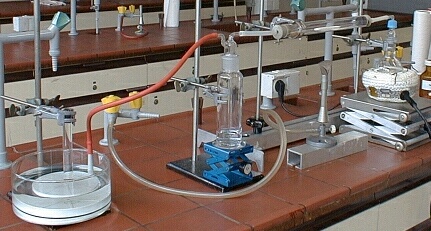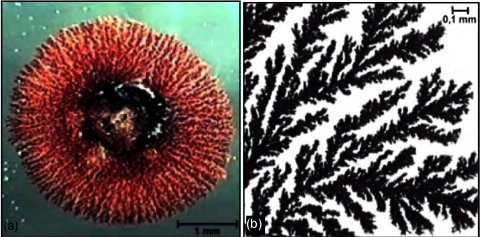Man! You guys must have written essentially all methods possible to make aliphatic aldehydes. But what comes to novel reactions here is something that may be of some interest for you crazy people out there!
Now talking about acetaldehyde i want to tell you about an experiment of mine. One night i dreamt about several things but i woke up when it crossed my mind. I wanted to make copper salts from metallic copper but as you guys know its reduction potential is higher than hydrogen, ie. acids wont bite on it. A classical example in vitually all inorganic chems books i've seen is the demonstration of HNO3 as an oxidising acid. I have no access to HNO3 nor H2SO4, so the reason i woke up suddenly was that i realised (omg im a n00b) that the NO3 ion is reduced.
My point is that i oxidised metallic copper which i took from some net cords and other cables with NaNO3 and HW grade 30% HCl. It needed some external heating to start but then proceeded with a violent continuous exhaust of NO2 which settled as a reddish-brown toxic fog on the floor
 Later i dreamed i wanted to see if i could do something else so i just grabbed what
we here in Sweden call "spolarvätska", dont have the english word for it but it is a solution of ethyl alcohol in water which is used in
the cars to rinse the main window. You could use any other available ethyl alcohol for this purpose.
Later i dreamed i wanted to see if i could do something else so i just grabbed what
we here in Sweden call "spolarvätska", dont have the english word for it but it is a solution of ethyl alcohol in water which is used in
the cars to rinse the main window. You could use any other available ethyl alcohol for this purpose. Anyway, as the relatively bearable chlorine like smell of NO2 could not have been enough, this shit made an awful pungent strong f*cking apple odour even in my dream, which took a hell of a long time to exit. No appetite for apples

As i made this in a ordinary 250ml rbf, all shit boiled off from the warm (~80*C) NaNO3+HCl solution and really just gave me a bad day. If i really wanted to look at this possibility to make acetaldehyde, i would have set up a distillation apparatus and added 96% ethyl alcohol through a claisen dropwise to the warm solution of HCl and NaNO3. I would also have liked to keep water through condensor cold and possibly placed the reciever in an ice bath. But until then i think i just wake up and do something constructive.
Take care and have fun





 )
)

